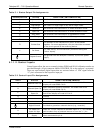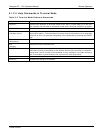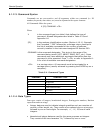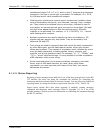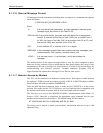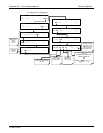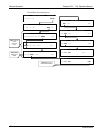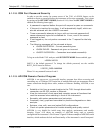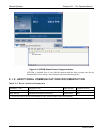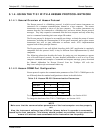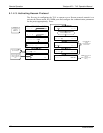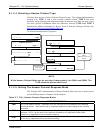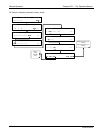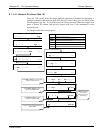
Teledyne API – T101 Operation Manual Remote Operation
153
5.1.2.8. COM Port Password Security
In order to provide security for remote access of the T101, a LOGON feature can be
enabled to require a password before the instrument will accept commands. This is done
by turning on the SECURITY MODE (Section 4.10.8). Once the SECURITY MODE is
enabled, the following items apply.
A password is required before the port will respond or pass on commands.
If the port is inactive for one hour, it will automatically logoff, which can
also be achieved with the LOGOFF command.
Three unsuccessful attempts to log on with an incorrect password will
cause subsequent logins to be disabled for 1 hour, even if the correct
password is used.
If not logged on, the only active command is the '?' request for the help
screen.
The following messages will be returned at logon:
o LOGON SUCCESSFUL - Correct password given
o LOGON FAILED - Password not given or incorrect
o LOGOFF SUCCESSFUL - Connection terminated successfully
To log on to the Model T101 analyzer with SECURITY MODE feature enabled, type:
LOGON 940331
940331 is the default password. To change the default password, use the variable
RS232_PASS issued as follows:
V RS232_PASS=NNNNNN
Where N is any numeral between 0 and 9.
5.1.2.9. APICOM Remote Control Program
APICOM is an easy-to-use, yet powerful interface program that allows accessing and
controlling any of Teledyne API’s main line of ambient and stack-gas instruments from a
remote connection through direct cable, modem or Ethernet. Running APICOM, a user
can:
Establish a link from a remote location to the T101 through direct cable
connection via RS-232 modem or Ethernet.
View the instrument’s front panel and remotely access all functions that
could be accessed when standing in front of the instrument.
Remotely edit system parameters and set points.
Download, view, graph and save data for predictive diagnostics or data
analysis.
Retrieve, view, edit, save and upload DAS configurations.
Check on system parameters for trouble-shooting and quality control.
APICOM is very helpful for initial setup, data analysis, maintenance and trouble-
shooting. Figure 4-16 shows an example of APICOM being used to remotely
configuration the instrument’s DAS feature. Figure 4-20 shows examples of APICOM’s main
interface, which emulates the look and functionality of the instrument’s actual front panel
07266B DCN6485



